- News
- Reviews
- Bikes
- Accessories
- Accessories - misc
- Computer mounts
- Bags
- Bar ends
- Bike bags & cases
- Bottle cages
- Bottles
- Cameras
- Car racks
- Child seats
- Computers
- Glasses
- GPS units
- Helmets
- Lights - front
- Lights - rear
- Lights - sets
- Locks
- Mirrors
- Mudguards
- Racks
- Pumps & CO2 inflators
- Puncture kits
- Reflectives
- Smart watches
- Stands and racks
- Trailers
- Clothing
- Components
- Bar tape & grips
- Bottom brackets
- Brake & gear cables
- Brake & STI levers
- Brake pads & spares
- Brakes
- Cassettes & freewheels
- Chains
- Chainsets & chainrings
- Derailleurs - front
- Derailleurs - rear
- Forks
- Gear levers & shifters
- Groupsets
- Handlebars & extensions
- Headsets
- Hubs
- Inner tubes
- Pedals
- Quick releases & skewers
- Saddles
- Seatposts
- Stems
- Wheels
- Tyres
- Health, fitness and nutrition
- Tools and workshop
- Miscellaneous
- Tubeless valves
- Buyers Guides
- Features
- Forum
- Recommends
- Podcast
feature
 Team Sky Service Course 2016 - 24.jpg
Team Sky Service Course 2016 - 24.jpg12 ways Team Sky develops those marginal gains
We visited Team Sky’s Service Course – the logistics HQ where all the equipment is stored and distributed – in Belgium last week, courtesy of Shimano, and got an insight into how some of its famous marginal gains are achieved.
In case you’ve been living in a cave for the past few years and it has passed you buy, Team Sky, led by Dave Brailsford, has built its success on the aggregation of marginal gains. Essentially, the idea is that if you can improve lots of things by a small amount, the net result can make the difference between winning and losing.
Make sense? So Team Sky examines all aspects of training, physiology, recovery, nutrition, equipment, psychology, racing strategy, and everything else that has an influence on results, and tries to improve every little thing. Each improvement might be very small, but it’s all about the cumulative effect.
It’s not a new philosophy but Team Sky has turned it into an art form and, as we all know, it has had three overall wins in the last four Tours de France. The proof of the pudding and all that.
We got shown around Team Sky’s Service Course by Carsten Jeppesen, Team Sky’s Head of Technical Operations and Commercial. It’s his job to ensure the team riders have the best possible tools with which to do their job: the bikes, the equipment, the bus and even their beds.
Here are 12 ways we spotted by which Team Sky looks to gain an advantage over the opposition.
1. Developing bikes with Pinarello
We’re all used to claims that brands have developed certain products with the pro teams they sponsor, and we usually treat those claims with scepticism, assuming they’re PR without much foundation in fact.
Team Sky, though, isn’t the sort of outfit that would ride just anything that’s supplied. Rather, Sky is so focused on getting the best tool for the job that we believe Pinarello when it says the Dogma K8-S, for example, was a response to a specific request from the team. This is a bike that’s designed especially for dealing with the Paris-Roubaix cobbles, hence a small amount of rear travel via the DSS 1.0 suspension system.
Check out our First Ride on the Pinarello Dogma K8-S here.
Team Sky also had a big contribution to the design of the Dogma F8 road bike and the Bolide time trial bike.
2. Using the same mattresses and pillows before/during races
It’s well known that Team Sky takes its own mattresses and pillows to major races to help make sure that riders get a good night’s sleep. With rest and recovery so important, particularly in a long stage race, why take the risk of a key rider starting a big day after not sleeping well?
Logistically, shifting bulky items like this around isn’t easy, but Team Sky considers it an effort worth making.
While the race is going on, carers go and prepare the riders’ rooms for the night.
“The differences between the hotel rooms that we use are extreme,” says Carsten. “If we come to a hotel room that’s not in a good state in the Tour, for example, our staff give the place a proper clean. You’d be surprised at how dirty a hotel room can be. Quite often they move the bed and clean everywhere.
“In a Grand Tour a rider’s breathing system is really challenged and just small amount of dust in a dirty room can make them sleep quite badly.”
3. Sorting out equipment well in advance
Team Sky uses FMB Paris-Roubaix 27mm tyres for Paris-Roubaix. These are extremely popular among the pro teams for the cobbles. Rather than risk not having them delivered in time, Team Sky buys its tyres a year in advance and stores them at its Service Course until they’re needed.
We also spotted boxes of Shimano C50 wheels squirrelled away for the Tour de France later in the year. Get them early and there’s more time to sort out any issues.
4. Travelling on the Death Star
Chances are that you’ve seen or heard about Team Sky’s bus, nicknamed the Death Star, before because it’s quite famous, as buses go. Forget about your old school bus, this one has individual reclining, deeply padded seats for the riders.
There are showers in the middle, a toilet, a treatment/meeting room at the back, a very good sound system… It’s all about keeping the riders comfortable. Sadly, someone has graffitied one of the wall panels.
The bus looks cool and imposing, and that’s all part of the deal. Team Sky wants to convey a strong image.
Even the bus driver we spoke to, Chris Slark, was interviewed by Dave Brailsford. He has a background in Formula 1 and Team Sky wanted to bring over some of the standards from that sport in terms of cleanliness and appearance. Brailsford also wanted someone with a reputation for being a character.
Check out this video from inside the bus.
The riders get to choose the flag alongside their name on the side of the bus, by the way. That’s why Ian Stannard has the flag of England and Geraint Thomas and Luke Rowe have the flag of Wales while Alex Peters, Ben Swift and Chris Froome all have the Union Jack.
5. Using a state-of-the-art mechanics’ trucks
The sides of Team Sky’s mechanics’ truck extend out to create a spacious workshop.
Early season races can be cold while races like the Vuelta can sometimes be unbearably hot so Team Sky provides its mechanics with a climate controlled environment to make life more comfortable.
Like the bus (above), the idea is to keep everyone on the team feeling good.
6. Standardising saddle height measurements
See those two blue lines on this Fizik saddle? They’re a little camouflaged by the grip area but one is 4cm and the other is 15cm from the tip of the saddle. Mechanics add those lines to the saddles of each of the 250 bikes ridden by Team Sky in a year.
“There are so many different ways of measuring a bike,” says Carsten Jeppesen. “We have nine full-time mechanics and if they measured nine different ways it would be too risky for us, so we have made a way of doing things based on those two specific points. It is a way of making sure that all of a rider’s bikes are set up the same.”
7. Organising wet weather bags
All Team Sky riders have a wet weather bag that’s stored in a team car during racing. If it starts raining, it’s easy for the staff to find and hand up the required kit. It’s made even simpler by the fact that each item is stored in its own labelled pocket
8. Using colour coded water bottles
Team Sky uses up to 35,000 drinks bottles a year. They’re used once each and then given away.
“Bottles with blue tops are for water, bottles with white tops are for energy drink,” says Carsten. “It makes it easy.”
It won’t surprise you to learn that Team Sky has a hydration strategy that riders follow, along with a recovery strategy, and loads of other strategies.
“We don’t have a protocol for everything, but we try each year to add a few things,” says Carsten.
“It’s easy to put down on paper that you are going to do something, but to execute it is a different thing. That’s something that we’re good at: making a protocol and then making it happen.”
9. Cooling down on a trainer
Team Sky has brought in staff from outside cycling, some of whom were surprised that riders would sprint to a race finish after several hours in the saddle and then not no cool down.
“We were the first team that started to warm down after the stage,” says Carsten. “If you look at swimmers, after a final they’ll do a short interview and then will jump into the training pool and do a few laps.
“In cycling the norm was that riders would get to the line, speak to the media, go to the bus, get a shower, go back to the hotel and get a massage.
“Our coaches and sports scientists said this was crazy. To start the recuperation phase quicker they said the riders should get on the trainer before even speaking to the journalists. We started doing that and all the other teams would laugh.”
“Now they all do it!”
10. Developing helmets with Kask
Team Sky has been instrumental in the design of several helmet designs from Italy’s Kask. The everyday road helmet is the Protone, first unveiled at the Tour de France in 2014.
“The Protone has been developed in close collaboration with Team Sky’s riders and sports scientists to give an advantage in the majority of the Tour stages,” said Kask at the time. “The helmet has one of the lowest drag coefficients (cx) of any ventilated helmet, and among the fastest rates of heat dissipation too.”
The second generation of the Protone was released last year – just months after the original – after Team Sky asked for some tweaks.
Team Sky also had a hand in the development of the Kask Infinity, the first bicycle helmet to allow the rider to switch the vents from fully closed to fully open, and the Bambino time trial helmet.
“We asked for all three models; they started with an idea from the team and Kask has made them for us,” says Carsten. “Because it works for us, it also seems to work for the consumer.”
11. Working with Muc-Off
Muc-Off provides Team Sky with cleaning products, greases and lubes.
“We have developed specific lubes with Muc-Off,” says Carsten. “We have a new grease for really bad weather conditions coming out that we have spent a lot of time working on with them. Dirt doesn’t stick to it.”
12. There’s a flat at the Service Course
The Service Course incorporates a flat where team staff can live while they’re working there. You’d never know that you’re essentially upstairs in a warehouse.
The idea is to create a comfortable environment where staff can relax in their downtime.
Mat has been in cycling media since 1996, on titles including BikeRadar, Total Bike, Total Mountain Bike, What Mountain Bike and Mountain Biking UK, and he has been editor of 220 Triathlon and Cycling Plus. Mat has been road.cc technical editor for over a decade, testing bikes, fettling the latest kit, and trying out the most up-to-the-minute clothing. He has won his category in Ironman UK 70.3 and finished on the podium in both marathons he has run. Mat is a Cambridge graduate who did a post-grad in magazine journalism, and he is a winner of the Cycling Media Award for Specialist Online Writer. Now over 50, he's riding road and gravel bikes most days for fun and fitness rather than training for competitions.
Latest Comments
- OldRidgeback 7 min 27 sec ago
Hmm, it's overly bright car headlights that bother me most TBH.
- OldRidgeback 8 min 42 sec ago
I've used Lime bikes a few times and they can be very handy. My sons use them regularly. But I often see people riding them who have very minimal...
- Smoggysteve 8 min 49 sec ago
Is it just me, or is the Cues chainset better looking than the current Ultegra/ Dura Ace versions?
- Bikefatman 15 min 25 sec ago
I totally agree, cycle lanes are useless and no cyclist is using them
- IanMK 26 min 10 sec ago
The local authorities in Wales have always been able to turn 20mph zones back to 30mph. I believe that the argument about implementation is...
- richliv 1 hour 50 min ago
Lovely kit but pointless for all but top pros with deep pockets and money no object. The extra grand is not buying the rest anything better than...
- David9694 2 hours 45 min ago
Overhead obstacles count, but no special bonus.
- Will Ive Hook 7 hours 44 min ago
I got a pair for fifty quid a few weeks ago and they are a gorgeeous fit. If I'd paid £210, they'd still be in the box. I sized down from extra...
- belugabob 11 hours 22 min ago
If you take a look at Google maps street view, from the Bush lane end, you'll see that there already seems to be hedges, either side of what looks...
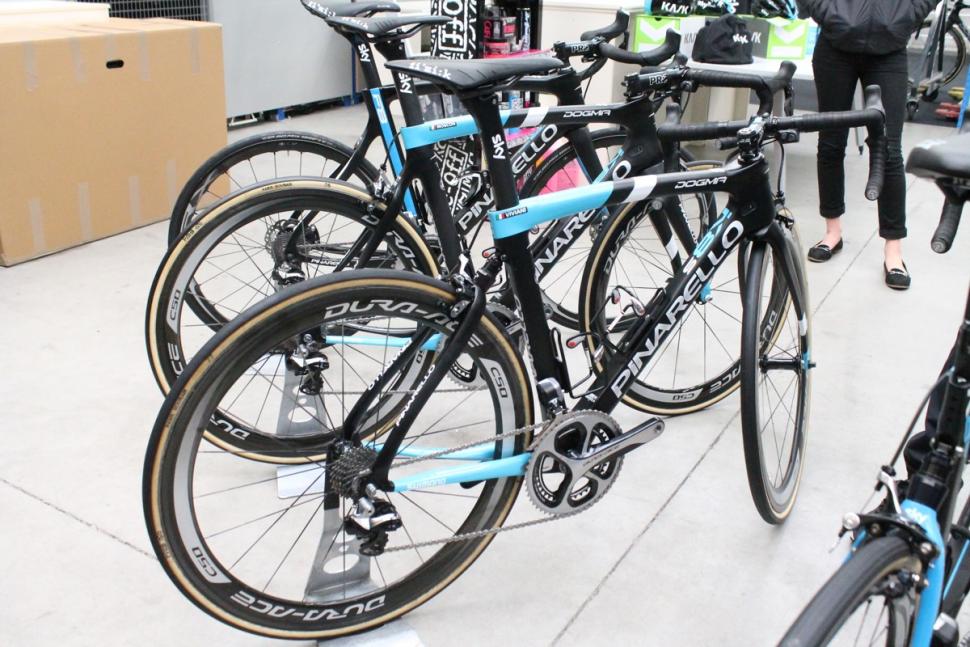
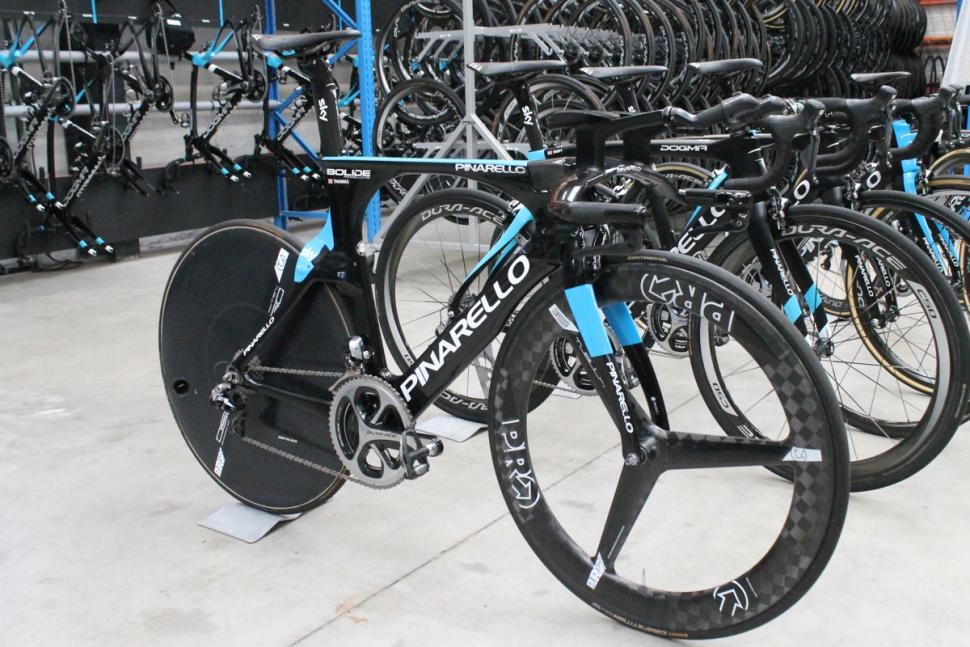








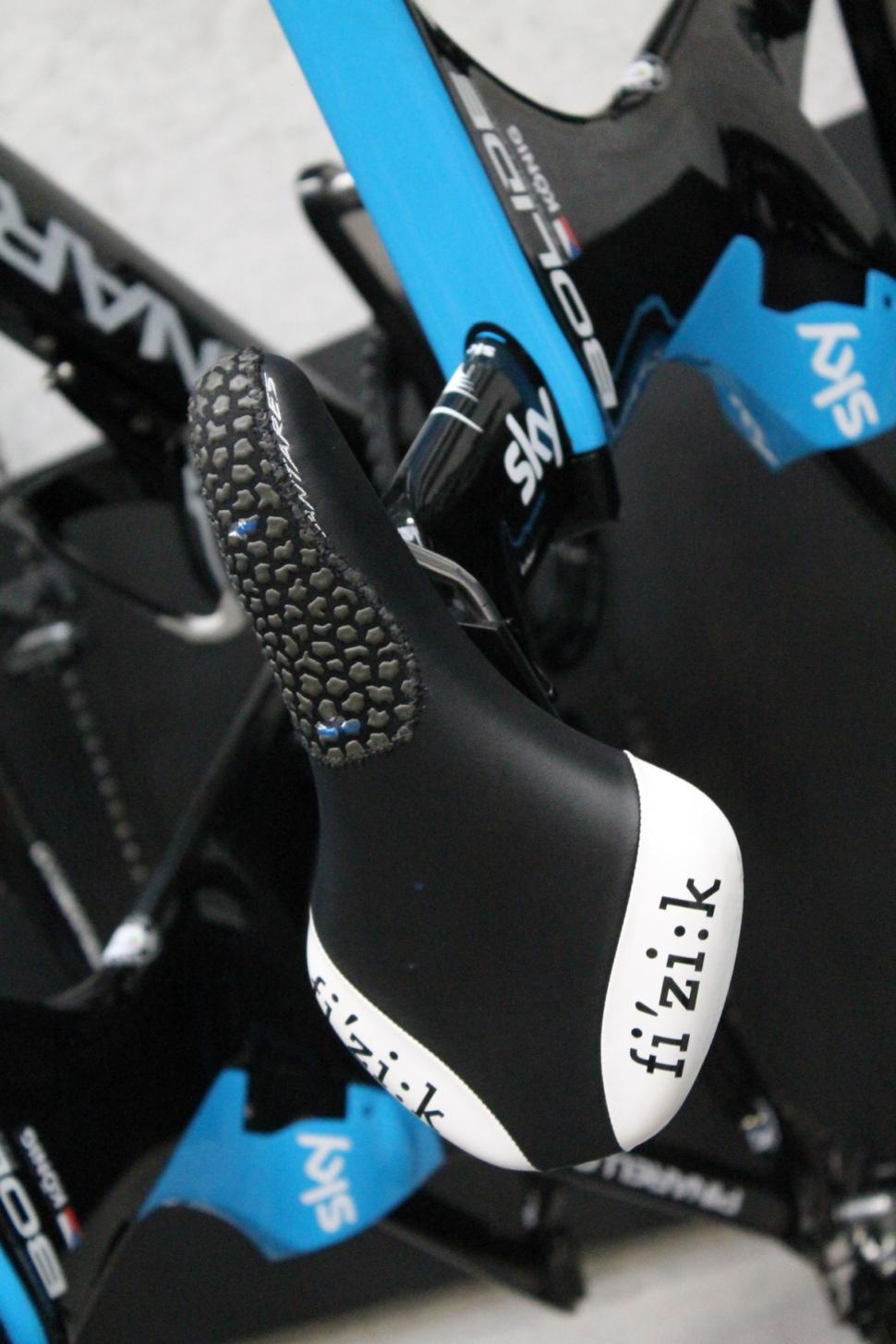



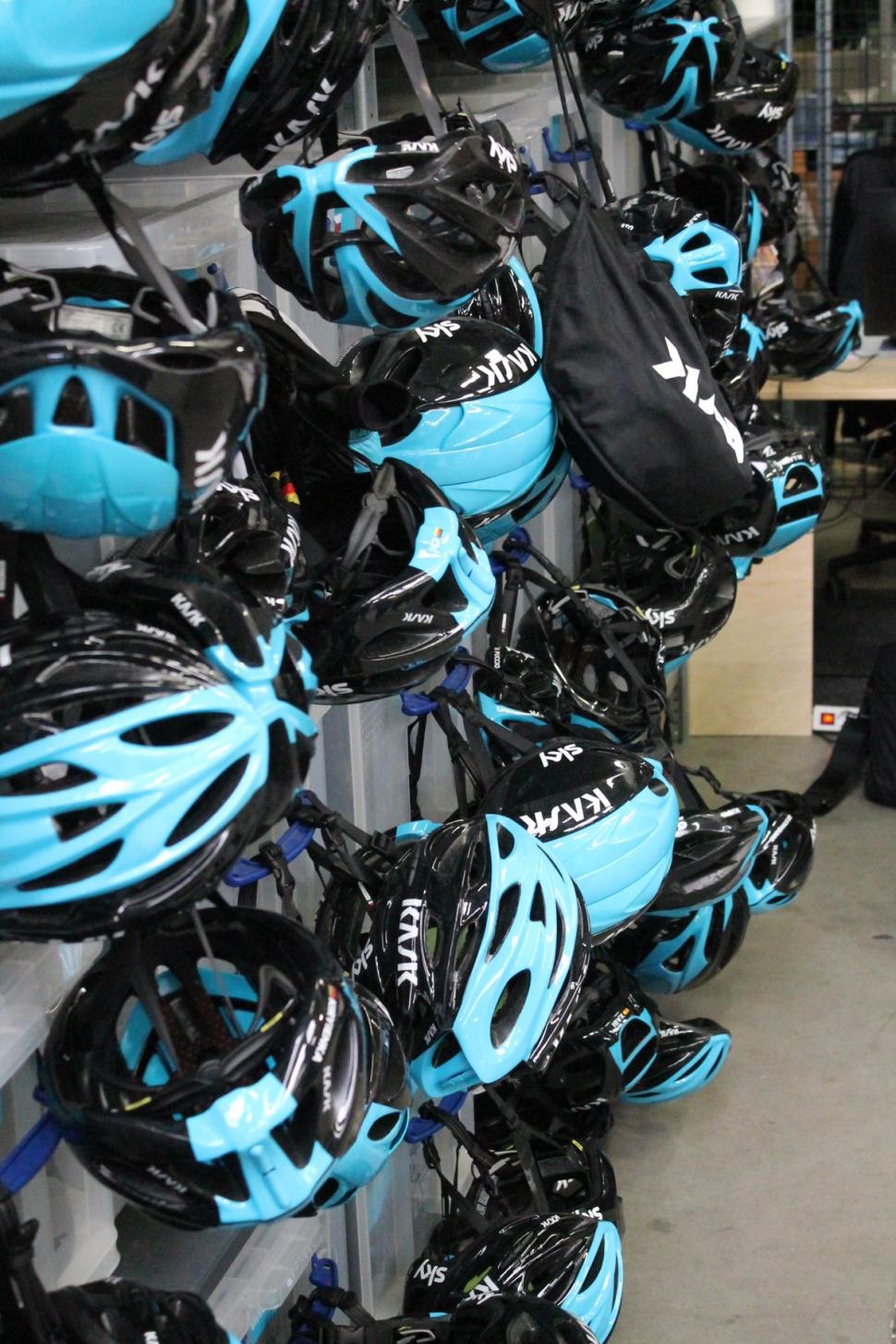
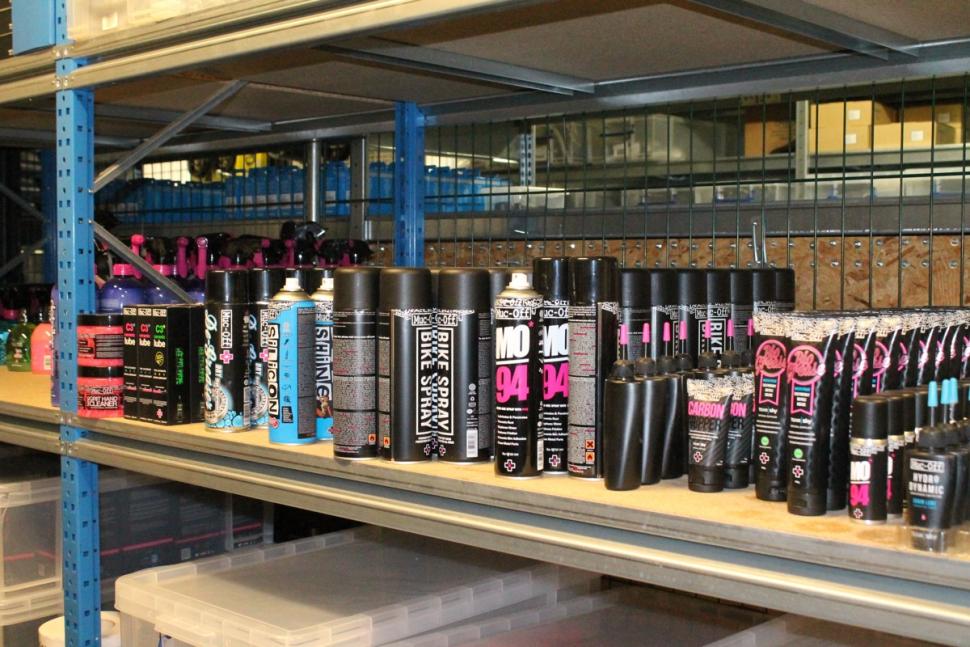

Add new comment
20 comments
I've been following cycling since the 70's and its a whole new game now.
I've never seen riders on rollers after races in the 80s.
I like the cynics treat everything as suspicious.
Sky give a journo some backstage detail - aah its a smoke screen....
Sky say nothing - well they would what with all the drugs etc...
They do have a big budget behind them and that carries more sway. More helpers. More kit. More mattresses. How many helpers would the team have if they're cleaning rooms before the riders come in ? That's never happened before. Millar and Kelly would be washing their own shorts back in the day.
The marginal gains is something that's come through the British Track squad. If they were dirty we'd have heard about it by now. Easy to test and track - no men in black training in unknown mountain areas.
Interesting article - of course they're not going to give away the really good stuff but it would probably be too tecchy for most.
I always felt the marginal gains thing a bit spinny, secret squirrel pr against the the fact of big cash buying better training camps at the right times at the right altitudes, with lots of sciencey lab blood analysis to ensure peak training.
Didn't they use to do post-stage TdF interviews on rollers in the 1980s and 1990s? Must be mis-remembering.
@mr turning
I think marginal gains implies innovations, as per default stuff that can be simple but not common practise: most of it isn`t or is already there long time. Marginal gains in my book mean and advantage over others, if else it`s a level playing field.
The title implied 12 marginal gains, and yes as such i expected something more sciency, more of the famed elusive way of working that set`s SKY apart. Alas it might be fables. Maybe it`s how you read it, but to me the article came across as sponsor promotion rather then journalism. (don`t get me wrong, i read it anyway but i`d like to read it for what it is)
surely the best marginal gain was the magic of being able to lose loads of weight whilst retaining the power ....
guess what the answers are not in this puff piece
I remember when Lance's successes were touted as being about hard work and attention to detail. Refining his equipment endlessly, having Trek make special bikes, his tyres were cured for a *year* in a dark shed, etc.
I'm not accusing Sky directly of anything. However in retrospect it is clear Lance and his camp were trying to create an elaborate story to explain his incredible success, and so I can't help but get suspicious now when I see other teams follow a similar strategy.
Every team works hard and pays attention to details, and staff and riders move around. There are no secrets, and it's highly unlikely the ones in this piece are making some magical difference.
35,000 bottles. Wow. I truly hope that they are given away and not landfill.
Can't they wash some of those bottles?
How frustrated Sky must be that despite being in the 7th year of marginal gains, they're still to add up to something Monument-al....
34th time lucky tomorrow?
apparantly you got your wish :.)
in Spanish riders flags they are also somewhat complicated
I agree with TheDoctor (is that you Tom Baker?), TheHound - and please note I'm no Team Sky cheer leader. They have used the legal marginal gains in the most up to date way to find small gains. Plus let the press see them (and yes it is good publicity - but who'd miss the Death Star ???)
Note that their skinsuits might be a marginal gain but they "might" not be Rapha - look closely at the sleeve aero weenies.
And before there's a back lash of comments (I love RoadCC and know many of the people as long time cycling friends but I'm not about to spend hours on here having tit for tats) I have personal insight into current UCI teams actual quest for marginal gains. Actual insight - not a mate knows a guy that said he heard that someone had seen a picture on instagram etc etc etc.
I can firmly say that KnightBiker, you too are right, Sky are not the only ones - but they are perhaps "one" of the most transparent and diligent of teams.
Post the Festina, Armstrong, etc era... at least many of these legal marginal gains (in some cases called "Tehno Dpoing") can help amateurs to see that a good nights sleep, correct nutrition, aero gains, good admin etc etc etc etc do count and can perhaps help quite a lot when you don't have a UCI 500 watt engine in your legs.
(And as a boy I would mix sodium bicarb with orange juice to help my running quest for PB's around a village not 6-miles away from where Road.CC resides - So I've been on the marginal gains quest a while too - "Brad" was only 3 r 4 at the time, but probably already faster than me!)
@ thehound
You tell yourself that but matrasses are applied by Lotto-nl since the time they were rabobank, and i think quick-step started it.
If there were any marginal gains it`s in training, starving yourself to death like Froome and analysing and adpating and maybe ketonen and other food related things. (science and stuff)
(and what has doping to do with it? stay on point please. tiresome)
What about Rapha? Surely some marginal gains have come from the kit provided to the riders.
Rapha make nothing. The same factory that manufactures their skinsuits and shorts creates the same for a vast percentage of the pro peloton. Their jerseys are made in China, again by a manufacturer who provides to various others.
Interesting that, as my jerseys say made in Portugal on them.
Your merino jerseys aren't Sky's jerseys.
Rapha don't exactly make a secret of the fact that their garment construction is mainly done by Moa, who make kit for loads of brands. Mostly in Italy. It's on their website http://pages.rapha.cc/stories/moa-sport
I'd be very surprised indeed if the Sky team kit isn't made in Italy. The teams want to have fast turnaround and access to the material designers and seamstresses.
I'd expect the higher volume production to be done all over the place, wherever the skills exist and the price is right. Saying Rapha make nothing is pretty much besides the point. That's the nature of most brands within cycling (and other areas) You do what you do best, and work with specialists to help create the entire product.
nIce Sky Sponsors promo piece, but how many of these things are really unique compaired to other teams? Most things are applied by any pro team, sky just has more money for quality then the average team.
They're not unique "now", because all the other teams started copying when they had to cut back on the doping and find advantages elsewhere.
Go back 4-5yrs and no other team was doing this stuff.
[/quote] They're not unique "now", because all the other teams started copying when they had to cut back on the doping and find advantages elsewhere. Go back 4-5yrs and no other team was doing this stuff.[/quote]
here is what you are saying:
doping stopped after 2011-2012
trek was not giving everything to lance to keep him on their bike
Pro bike mechanics didn't have degreaser before 2011.
cervelo doesn't have a creepy form mockup of dave zabriskie's timetrial position
a pro-conti team is not rolling around in a team bus that they bought from a protour team before it was movistar, and before it was caise d epargne. Their 1999 custom made second hand team bus replete with a million miles was inspired by seeing the sky death star in 2011.
uvex didn't make "helmets" that were shaped by jan ullrich's neck kink